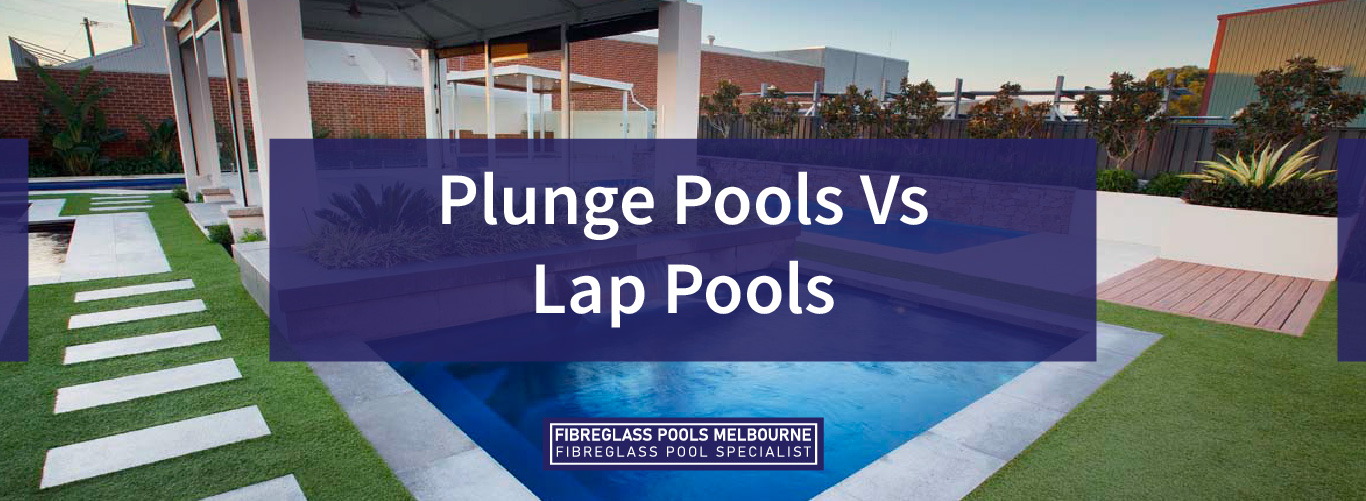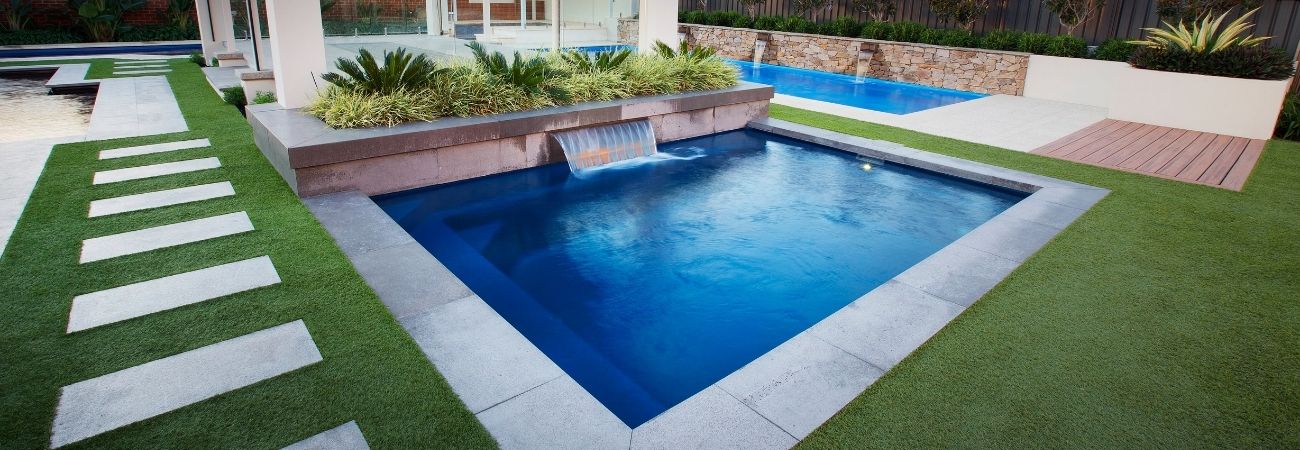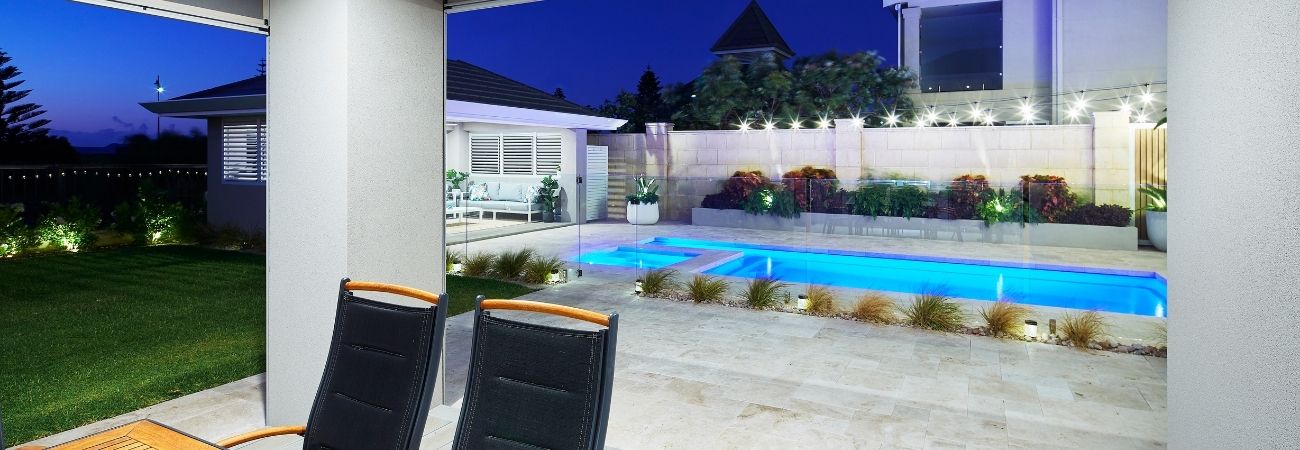Plunge Pools and Lap Pools - What Are Their Main Differences?
It never hurts to have a small swimming pool in your backyard, especially during the summer months – right? After all, having one allows you and your family to unwind whenever the going gets tough. However, buyers encounter a common conundrum when considering different small fibreglass pools – to choose a lap pool or to choose a plunge pool?

In this post, we’ll take you through all the differences between lap pools and plunge pools – two of the most popular compact swimming pool options. So, without any further delay, let’s dive right in!
Plunge pools - What are they?
Plunge pools are also known as dipping pools, and they are the best when it comes to rehabilitation and relaxation. They feature flat bottoms and shallow depths (typically around 1.5 meters), along with lengths ranging from 3 – 5 . These qualities make plunge pools the perfect choice for athletes, who often sustain injuries and have to recover through low impact exercise. We would also recommend plunge pools to you if you’re looking for a dedicated pool for your kids.
Should you buy a plunge pool? -
Whether you a purchase a plunge pool or consider some other pool type depends on certain factors such as:
- Available patio or yard space: If the available patio or yard space is limited, plunge pools are the most convenient swimming pools to install.
- Appearance: Due to their compact nature, plunge pools look quite appealing and make for great backdrops in party settings.
- Ease of installation and maintenance: Plunge pools are among the easiest fibreglass pools to install, and they can be cleaned without much trouble too. The overall installation and maintenance costs are quite low.
- Effects on the environment: Many pool types have been criticized for polluting their surrounding environments. However, plunge pools are known to have very limited effects on the environment.
- Customization possibilities: Customization possibilities are limited when it comes to plunge pools. However, buyers can add heating equipment and swim jets. Swim jets, in particular, can come in handy for enhancing the exercising aspect of plunge pools.
Plunge pool cons
While plunge pools have several pros, they may have certain limitations as well depending on your preferences. For example, if you’re looking for a pool that can accommodate multiple guests simultaneously, a plunge pool wouldn’t be the right purchase, as only a few people can fit in the pool.
You also need to exercise caution when your kids use a plunge pool. Kids tend to love diving or jumping into the pool. However, plunge pools’ shallow depths make it risky for kids to jump in, as they may hit the floor and injure themselves in the process.
You’d think that plunge pools would not have to comply with fencing and gating standards. However, the fact is that despite their small sizes, plunge pools aren’t exempt from adhering to the standards.
Now that you know all about plunge pools and what their advantages and disadvantages are, it’s time to move on to lap pools.

Lap pools - What are they?
Lap pools feature rectangular and long designs. On average, lap pools have lengths of 10 meters, widths of 2.5 meters, and depths of 2.3 meters. However, buyers can customize lap pools according to how much yard or patio space is available. Lap pools are ideal for folks who take swimming seriously. If there’s someone in your family who’s aspiring to be a professional swimmer, a lap pool would be perfect for practice at home.
Should you buy a lap pool?
- Available space and appearance: Lap pools can be customized to be quite compact. But the trademark rectangular and long appearance doesn’t look very good when it is fit into very tight spaces. A medium-sized yard or patio would be ideal for a lap pool that looks good.
- Installation and maintenance: Installing lap fibreglass pools isn’t as easy as installing plunge pools. On top of that, both installation and maintenance costs are higher for lap pools.
- Effects on the environment: Whether lap pools have significant adverse effects on the environment or not depend on how they are installed. Proper installation ensures minimal damage to the environment.
- Customization possibilities: In terms of customization potential, lap pools don’t offer anything significantly different than plunge pools. Athletes can use swim jets or heating equipment to make lap pools exercise-ready.
Lap pool cons
Lap pools have more pros than cons. However, their cons are worth considering for certain buyers. For example, if your patio or yard space is very small, a plunge pool would be a better option, as a lap pool’s dimensions wouldn’t allow it to be fit into the available space.
Lap pools also traditionally feature extended seating areas and splash decks. While it’s not mandatory to add these features, not adding them is likely to make the pool look and feel a bit odd. However, adding them would require you to spend more money.
As mentioned before, the installation and maintenance costs associated with lap pools tend to be on the higher side. So, if your budget is tight, you should look for other options.

Conclusion
Lap and plunge pools are both compact pool types, but they have differing features. While both of them are great for recovering from injuries and exercising and offer similar customization options, their designs, depths, installation times and costs are different. To conclude this article, we’d like to say that your purchase should be dependent on the size of your yard along with what you want. For example, if you have a big yard space and don’t have any issues in terms of spending money on seating areas and benches, go for a lap pool.
However, if you want your pool installation and maintenance costs to be limited, opt for a plunge pool. We hope that you found this comparison useful. Here’s to you and your brand new pool! Contact our pool building experts today!
